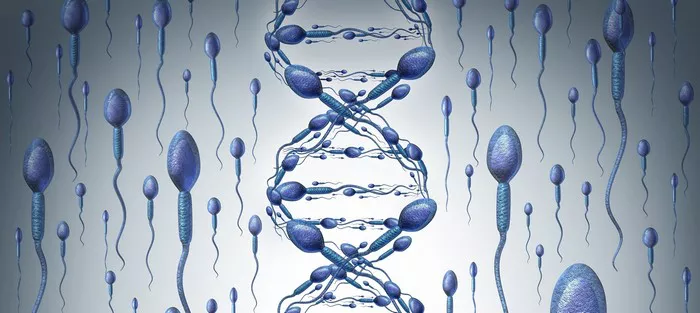Kartagener syndrome is a rare genetic disorder that affects various organs in the body, particularly the respiratory system and the reproductive organs. It is a form of primary ciliary dyskinesia (PCD), which is characterized by abnormal or non-functioning cilia. Cilia are tiny hair-like structures that line the respiratory tract, the reproductive organs, and other parts of the body. These cilia are essential for moving mucus and other substances out of the lungs and reproductive organs. When cilia do not function correctly, it can result in a variety of health issues, including infertility. In this article, we will explore how Kartagener syndrome affects fertility and discuss the impact it can have on both men and women.
What is Kartagener Syndrome?
Kartagener syndrome is a rare genetic condition that is inherited in an autosomal recessive pattern. This means that a person must inherit two copies of the defective gene—one from each parent—to develop the disorder. The syndrome is characterized by the triad of symptoms: situs inversus, chronic sinusitis, and bronchiectasis.
Situs Inversus
Situs inversus refers to a condition where the internal organs, such as the heart, lungs, and liver, are positioned on the opposite side of the body compared to normal. This is not usually harmful in itself, but it can complicate the diagnosis of other conditions.
Chronic Sinusitis
Individuals with Kartagener syndrome often suffer from chronic sinus infections due to the inability of the cilia to effectively clear mucus from the sinuses. This leads to inflammation and recurrent infections in the sinuses.
Bronchiectasis
The cilia in the lungs help clear mucus and bacteria. When the cilia are impaired, mucus builds up in the airways, leading to chronic lung infections and bronchiectasis. This condition causes the airways to become widened and damaged over time.
The cause of Kartagener syndrome is a defect in the genes that produce proteins necessary for ciliary function. As a result, the cilia in various parts of the body, including the respiratory system and reproductive organs, do not work properly. This dysfunction can contribute to infertility in both men and women.
How Does Kartagener Syndrome Affect Male Fertility?
In men, Kartagener syndrome often leads to infertility due to the malfunctioning cilia in the reproductive organs. Cilia are involved in the movement of sperm, and when they do not work correctly, sperm cannot travel properly through the reproductive tract, leading to difficulties in conception.
Ciliary Dysfunction in the Male Reproductive System
The primary cause of infertility in men with Kartagener syndrome is the dysfunction of cilia in the male reproductive organs. The male reproductive system, including the epididymis and vas deferens, relies on ciliary movement to transport sperm from the testes to the urethra. When these cilia are unable to move properly, sperm cannot reach their destination, resulting in infertility.
Furthermore, cilia dysfunction in the sperm themselves is another contributing factor. In some cases, sperm cells may have abnormal flagella (the tail-like structure that helps sperm swim). This impairs their ability to swim toward the egg during fertilization, making conception even more difficult.
Azoospermia and Oligospermia
Men with Kartagener syndrome may also suffer from azoospermia (the absence of sperm in the semen) or oligospermia (low sperm count). Both conditions make it difficult for sperm to reach the egg and fertilize it. Azoospermia is more common in men with Kartagener syndrome because the absence of functioning cilia in the epididymis prevents sperm from being transported effectively.
How Does Kartagener Syndrome Affect Female Fertility?
In women, Kartagener syndrome can also cause infertility, primarily due to the dysfunction of cilia in the fallopian tubes. The fallopian tubes are responsible for transporting the egg from the ovaries to the uterus. Cilia within the fallopian tubes play a crucial role in moving the egg along this pathway. If these cilia are not functioning properly, it can result in delayed or impaired egg transport, making conception difficult.
Ciliary Dysfunction in the Female Reproductive System
In the female reproductive system, ciliary dysfunction can interfere with both egg transport and the fertilization process. When the cilia in the fallopian tubes fail to move, the egg may not reach the uterus in time, leading to fertility issues. Moreover, even if fertilization occurs, the inability of the cilia to facilitate embryo transport can result in an ectopic pregnancy, where the fertilized egg implants outside the uterus.
In addition to ciliary dysfunction, chronic inflammation of the reproductive organs due to recurrent infections may contribute to scarring and blockages in the fallopian tubes. This can further exacerbate fertility problems and make it even more difficult for women with Kartagener syndrome to conceive.
Recurrent Miscarriages
In some cases, women with Kartagener syndrome may experience recurrent miscarriages. This can be attributed to a combination of factors, including impaired sperm motility, delayed fertilization, and abnormal embryo development. Furthermore, the chronic inflammation in the pelvic area can affect the implantation of a fertilized egg in the uterus, leading to early pregnancy loss.
Diagnosis of Kartagener Syndrome Infertility
The diagnosis of Kartagener syndrome typically involves a combination of clinical evaluation, genetic testing, and imaging studies. To confirm the diagnosis, a doctor will usually look for the classic triad of situs inversus, chronic sinusitis, and bronchiectasis. A diagnosis of Kartagener syndrome can be supported by genetic testing, which identifies mutations in the genes responsible for ciliary function.
If a man or woman with Kartagener syndrome is experiencing infertility, additional tests will be performed to evaluate the functioning of the reproductive organs. In men, a semen analysis will be conducted to check for sperm count, motility, and morphology. In women, a pelvic ultrasound or hysterosalpingography (a procedure that examines the fallopian tubes) may be performed to assess the health of the reproductive organs.
Treatment Options for Kartagener Syndrome Infertility
While there is no cure for Kartagener syndrome, there are various treatment options available to manage infertility. These treatments aim to improve fertility by addressing the underlying ciliary dysfunction and helping individuals conceive.
Assisted Reproductive Technologies (ART)
For both men and women with Kartagener syndrome, assisted reproductive technologies (ART) can help overcome infertility. In men, ART treatments like intrauterine insemination (IUI) or in vitro fertilization (IVF) may be recommended, particularly if sperm motility is impaired. IVF allows sperm to be directly injected into an egg for fertilization, bypassing issues related to sperm motility or transport.
For women with Kartagener syndrome, IVF may also be an option if the fallopian tubes are blocked or unable to transport eggs properly. In some cases, egg retrieval and fertilization can be done outside of the body, and the resulting embryo is transferred directly into the uterus.
Surgical Intervention
In some cases, surgical intervention may be necessary to address structural problems within the reproductive organs. For example, surgery may be performed to remove scar tissue or correct any blockages in the fallopian tubes in women with Kartagener syndrome.
Conclusion
Kartagener syndrome is a rare genetic disorder that can lead to infertility in both men and women due to the dysfunction of cilia in the reproductive organs. In men, Kartagener syndrome can cause azoospermia or oligospermia, while in women, it can impair egg transport and lead to recurrent miscarriages or ectopic pregnancies. Although Kartagener syndrome poses challenges for fertility, assisted reproductive technologies, such as IVF and IUI, offer potential solutions for couples affected by the condition. If you or your partner is experiencing infertility and suspect Kartagener syndrome, it is important to consult a healthcare provider or fertility specialist for a proper diagnosis and to discuss appropriate treatment options.
Related topics:
IVF with Endometriosis: A Comprehensive Guide



























